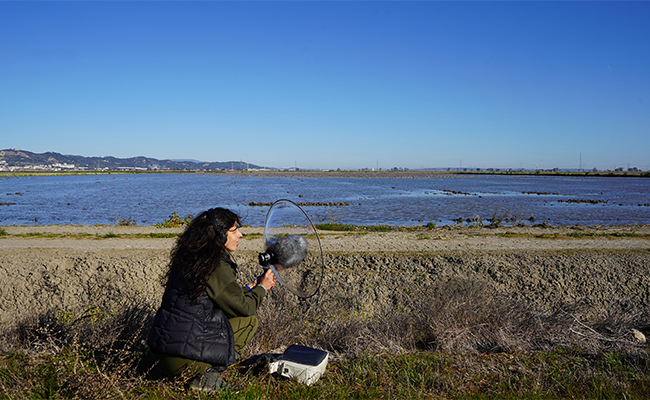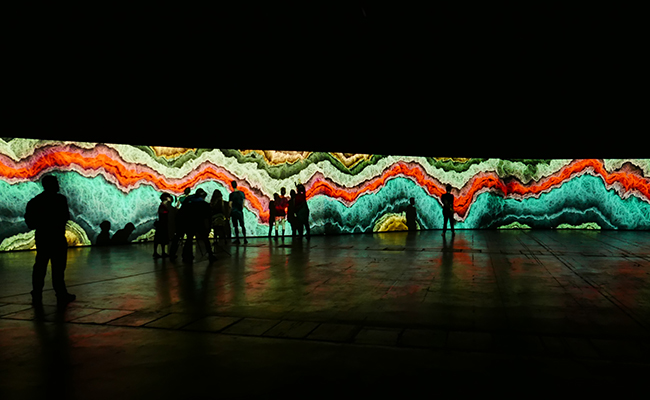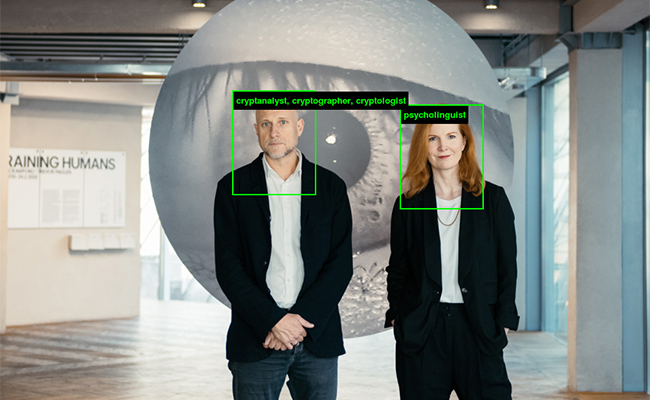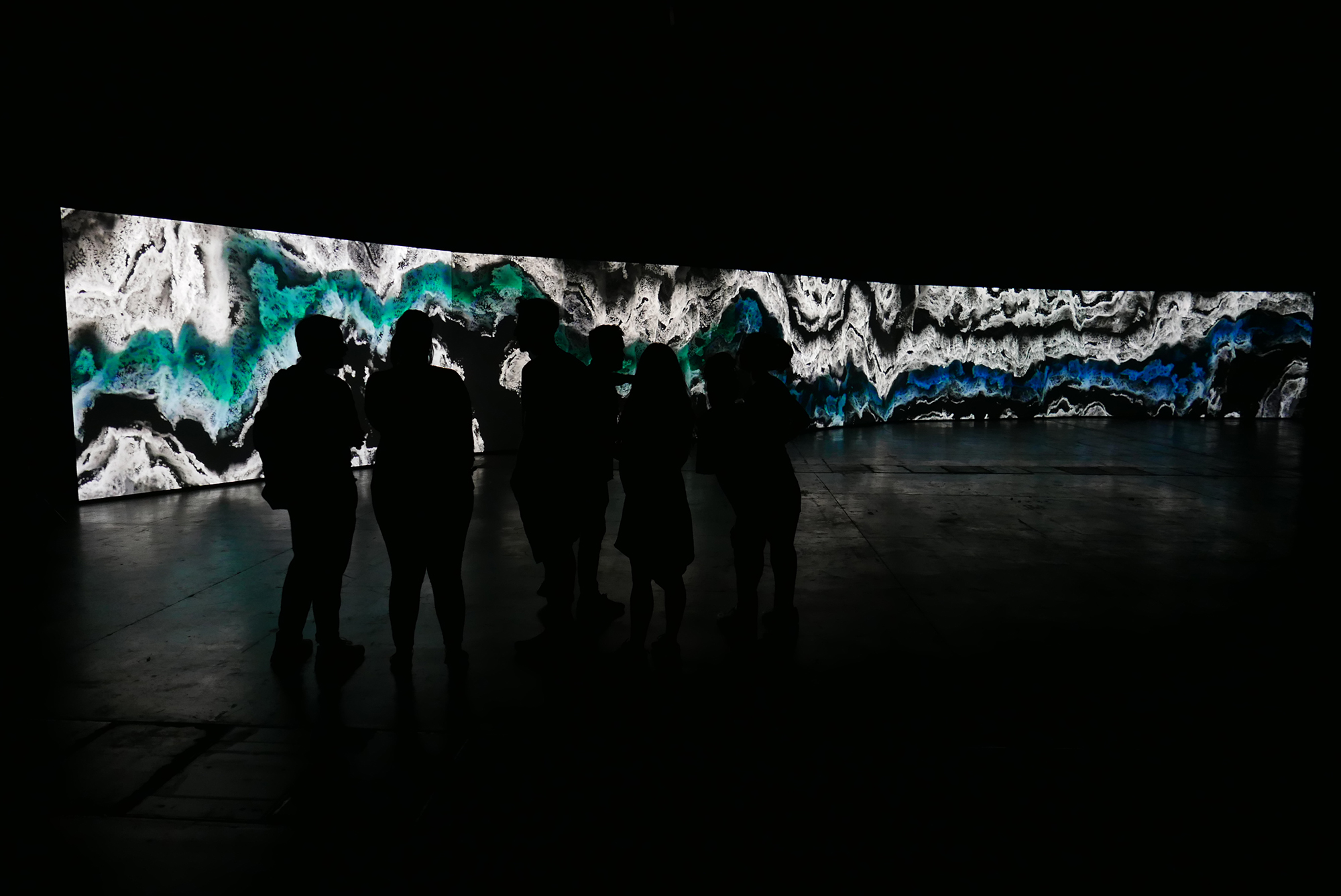Sometimes a festival can be so much more. Tapping into arts, design, and electronic and experimental music festival, Sónar Lisboa (8-10 April) is one for the body and for the brain. Initially born in Barcelona back in 1994, the festival is expanding to host events in Istanbul and now Lisboa. Alongside the music program, Sónar has an extended day program of creative technology experiences called Sónar+D. We spoke with Sónar+D curator Antónia Folguera on what to expect.
Sónar is for the body and for the brain. For dancing and reflecting
What is the role of Sónar+D within the larger context of the festival?
Since the very beginning, back in 1994 in Barcelona, Sónar has always provided an experience that transcends music and tracks the developments of technology in the creative fields with a program that includes talks, workshops, installations, networking activities, etc.
It extends Sónar’s role in detecting emerging artists and languages into the space of creative and technological innovation. Sónar+D puts the R+D into Sónar.
Also it’s a space for curiosity, inspiration, reflection, debate and conversation around the bigger questions that impact society, and how these questions are approached from creative technology, especially if this creative technology comes from the interstitial space between art and science.
How has the local context of Lisboa influenced the program?
Lisboa (and Portugal in general) has remarkable scientists working in the fields of science and technology regarding sustainability; also, inviting the Portuguese talent beyond the scope of digital arts, certainly adds a different dimension: the participation of artists like Cláudia Martinho, who works in the field of aural ecology and who has recorded the soundscape of the Tejo river wetland; or Francisco Vidal, a very well known painter, who will for the first time bring his painting to virtual reality certainly bring something not very common in creative technology events.
Also the site-specificness of the Lisboan Sónar+D plays an important role, occupying different old industrial spaces in the Beato area. Speaking of site-specific: one of the old factories in the area will serve as the stage for a sound and light installation that will occupy all four floors of the entire Moagem building, an old flour factory whose old machinery will come to life again through the sounds of Alessandro Cortini, the synthesist of Nine Inch Nails who is based in Lisbon. No other Sónar (or any other festival) in the world will have that.

Sustainability and human rights are important pillars to +D, what is your approach to these themes?
Art is not disconnected from what's going on in society, it’s a reflection of it, and artists more than ever before are committed to the larger societal concerns regarding climate emergency, corporate extractivism, biases in technology, and about what ultimate purposes should technology (and art) serve.
Through the lens of art, it’s possible to raise awareness to all of these issues. The force of the natural world will be explored through the work of Semiconductor, who will show an installation that uses seismic data; climate emergency will be covered by Tega Brain and Sam Lavigne, who will present a network of bots that click on advertisements on climate news, artificially inflating the revenue for these ads (which ultimately should lead to more and better information about climate change), corporate media extractivism and its psychological effects are the topic for the works of the artists Cadie Desbiens-Desmeules and Rudolfo Quintas; while freedom of expression is approached through the work of the agency Forensic Architecture. Sónar+D Lisboa will present “The Murder of Pavlos Fysass” an investigation that was presented as evidence in court for the trial of the murder of a young Greek rapper killed by the neo-nazi organization Golden Dawn.
Also related to sustainability and circularity there will be a large piece made by the Porto collective berru. They are residents at Artworks, a company where they build infrastructure for exhibitions, and who have resident artists that work with waste from the workshop, to build their pieces. The berru piece is installative and will be intervened by a musician.
Art is not disconnected from what's going on in society, it’s a reflection of it
What can we expect from the exhibition?
Visitors will be able to listen (for real) to the sounds of earthquakes and volcanoes (Semiconductor) and aquatic ecosystems (Cláudia Martinho); they will be able to see the visualization of the brain activity of a dancer, and her motion captured with different sophisticated techniques (Tupac Martir); they will be see artificial intelligence algorithms in action (Tega Brain, Sam Lavigne, Cadie Desbiens-Desmeules, Rudolfo Quintas), they will see how a real investigation of a crime took place, making a very precise use of image and sound (Forensic Architecture), they will enter the colorful world of Francisco Vidal through virtual reality; they will discover narratives around climate change (DFuse); and they will get trapped in a loop and get hypnotized by André Gonçalves quirky machines that play with ping pong balls to reflect upon productivity, capitalism and the “usefulness” of technology.
Not to forget getting lost in the four floors of the Moagem factory intervened by the sounds of Alessandro Cortini.
A selection of very powerful (and beautiful) audiovisual works that reflect on ecology, nature, climate emergency, sustainability, corporate extractivism and human rights.

What can art do that music can't?
First of all, music is art. They belong to different “industries”, and their circuits are different, but at the end of the day, art is a way to make sense of the world, no matter if it’s music, or film, a VR piece or an NFT.
But the exhibition contains different installations and audiovisual works, complementing the music program to provide a larger festival experience that it’s not just about the music, but about culture, about what happens in technology, in science, and in society. Sónar is for the body and for the brain. For dancing and reflecting.
A subtheme in your program is that of AI and algorithms—how might innovations within these realms contribute to a transcendental festival experience?
AI is introducing itself into all kinds of art making, from music production and performance to visual arts. Little by little is pushing art in different interesting directions. It’s still early days, and it’s exciting.
AI is also having an impact in our lives, whether we are aware of it or not; the ethical implications of AI are the subject of many artworks of all kinds.
In Sónar Lisboa we will explore the ethical implications of AI through the talk by Trevor Paglen and Kate Crawford and Alter Ego by Cadie Desbiens-Desmeules. AI is also the technology that Tega Brain and Sam Lavigne use to program their botnet.
There are many discursive lines intersecting throughout the program.

What trends have you spotted in curating this program? (this could be anything really; from trends in music to materiality)
While sticking to the broad themes of sustainability and human rights we have tried to keep the program varied in terms of topics and formats. It’s not exactly a trend, but it forms part of digital art’s materiality: screens are very important and most artists in the digital realm express their art through the screen (or projection). It’s not necessary, but at the moment it’s the most current medium.
Topics around nature and climate change are also very common both in music and visual arts. Nature, biology, geology, etc. are inspiring artists as much as algorithms.
'Immersiveness', be it through VR or AR, or using other methods (sound, for instance) is a sensation that many artists want to provoke with their works.
All too often when we speak with technology, we think of innovation. What do you think of it?
Innovation is a word that has been so overused that has lost its meaning. Technology always moves forward, impacting every facet of our lives. Technology has a crucial role in music - and music has a crucial role in technology, as music serves as a field for innovation. Think about it: the strangest technologies always make their way into music, and yes, they force innovation. If it weren’t for Napster (which was based on software not intended for music) today we wouldn’t have Spotify or Netflix; the blockchain was created for cryptocurrency but is already finding (beyond monetization) different applications in the music field.
Art asks technology: what else are you capable of doing? It certainly helps bring certain technologies forward, thus innovating.
Art asks technology: what else are you capable of doing?
Humans have created a barrier between the built environment and the natural world. How may creative technologies (or, artistic approaches to such subject matter) bridge these environments?
There are a lot of artistic works that critically approach this subject, and how humans at a certain point decided to consider themselves not to be a part of nature. Nature is always “the other”. There is a growing interest in building artistic narratives around “otherness” and around establishing relationships with “non-humans” regardless of the species.
Art in 2022 is very much influenced by thinkers like Donna Haraway or Ursula K. Le Guin, and scientists like Linn Margulies, that invite humans to rethink themselves as a species.
For many centuries art (especially visual art) represented nature. Today, art, apart from finding novel ways to represent nature, is trying to rethink the ways in which we relate to nature.
Sónar Lisboa takes place from 8-10 April 2022. Tickets are now available via this link.

Share your thoughts and join the technology debate!
Be the first to comment